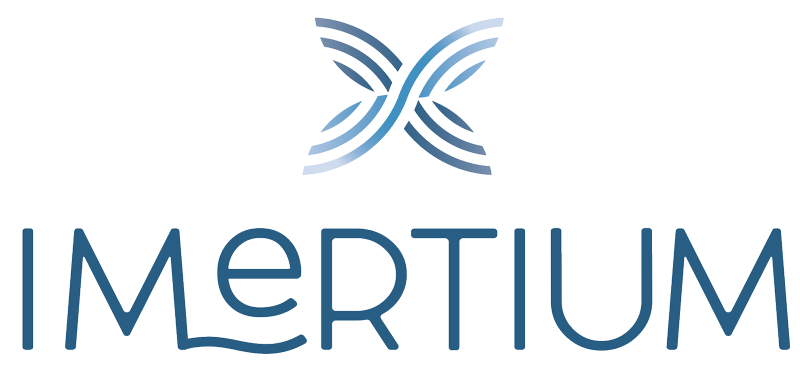And Kubernetes is the modern method to automate Linux container operations. Kubernetes helps you simply and effectively handle clusters working Linux containers throughout public, private, or hybrid clouds. At a look, Application Lifecycle Management (ALM) and the Software Development Life Cycle (SDLC) seem whats alm interchangeable. However, they serve completely different scopes inside software program creation and administration. Those efforts are repeated till the product is ready for release. A lot happens within the lifetime of a product (or application or software).
They also automate the process of software development and delivery. The main difference between ALM and PLM lies of their origins and intended purpose. PLM systems were initially developed for electrical and mechanical engineering in the automotive and aviation industries. So successful in making what had been as quickly as unmanageable processes manageable, PLM is now utilized in nearly every manufacturing trade, including medical units.
These will include elements of ALM, PLM, and can both integrate with ERP methods, or even include such capabilities. Use open source technologies and a extensive range of application lifecycle tools. Track the relationships among requirements, defects, and tests throughout the appliance lifecycle. Manage take a look at planning, execution, defect tracking, and general quality. Designing, constructing, testing, and deploying the application can all be thought-about a part of the development phase. Standardization of these processes results in the ability to automate governance.

In other words, teams should determine on the purpose at which work should be stopped and moved to a more moderen version of the product or migrated to a special product completely. If there are automated exams involved, these testing outcomes are tracked manually too. Most importantly, traditional take a look at plans are rarely reviewed or changed. If you’re simply getting began with Agile ALM, think about introducing Agile to each of your traditional lifecycle phases.
ALM emphasizes division coordination, ensuring seamless growth, upkeep, and governance integration. In essence, ALM supplies a framework to handle an utility’s lifecycle, guaranteeing it meets evolving business needs and combats challenges that arise throughout its journey. As software evolves, ALM emphasizes continuity, addressing changing necessities, software program vulnerabilities, outdated libraries, and more. In practice, it includes orchestrating duties, from ideation to decommissioning, to ensure optimum efficiency and relevance throughout the application’s lifespan.
It helps you improve the event course of — and ensure your product is totally tested as you go. And, most necessary, it helps everybody on your team keep on the same web page. ALM — application lifecycle management — is the method of managing the lifetime of a product from initial ideas by way of end of life. As new consumer stories are added, new check instances ought to be added too. Testing is completed in sprints, usually utilizing test automation to increase take a look at protection.
Enterprise Community Cloudbusiness Community Cloud
Application Lifecycle Management (ALM) is the method that guides a software program application from its conceptualization to retirement. Critical for delivering a prime quality product to your users, application lifecycle administration is critical for all software program builders and stakeholders to know. In this information, we’ll cowl what the process is, what it involves, its importance in trendy software improvement, and extra.
Before this shift, each of the disciplines that made up the general software process was completely separate. As we stated earlier than, if the work in the course of the earlier phases was done successfully then the amount of product upkeep will be considerably less. Basically the nearer the system is to the actual needs of the user, and the extra issues that had been caught through the testing / development phases, the fewer problems we will see in the course of the upkeep and roll-out processes. Two of the principle challenges in implementing ALM processes are efficient scalability and constant visibility.
Alm Software Suites
In conventional ALM, buyer feedback comes within the type of requests for bug fixes or options. Agile ALM is the apply of using Agile processes to handle your requirements, points, and tests. ALM now supports OData (Open Data Protocol), the OASIS REST-based normal for accessing ALM information. You can use business intelligence instruments that support OData (such as Power BI and Tableau) to hook up with ALM data and generate charts and stories.
The time period is used in the context of software program functions, but it can be utilized in different kinds of techniques as well. SDLC can be considered a half of application life cycle management, primarily in the course of the growth, testing, and deployment phases. ALM could include a quantity of development life cycles for a given utility.

Efficient ALM practices often result in cost financial savings in the lengthy term due to decreased rework, sooner time-to-market, and enhanced software program quality. Here are the highest 4 you possibly can expect if you do ALM effectively with a dedicated software lifecycle management device. It helps you set the proper requirements — and make sure they are met.
Collaborate On Agile Requirements
Testing and high quality assurance typically overlap with the event stage. Testers ought to start making ready their test circumstances and testing environments earlier than the product is formally launched. Testers should also be available to provide suggestions on the applying throughout growth. Furthermore, integration and unit exams ought to be incorporated into programming actions. ALM upkeep is a dynamic and integral a part of the software program improvement life cycle, ensuring that functions not only meet but persistently exceed user expectations whereas adapting to the changing landscape. Throughout these levels, ALM targeted on traceability, and efficiency to make sure a clean and managed growth process.
Customer suggestions, reviews, and internet promoter scores present insights into how nicely your software program meets user wants and expectations, immediately linking to the effectivity of your ALM practices. Features are continuously coded, examined, and deployed to speed up the development lifecycle. ALM covers the whole lifetime of an utility, from the preliminary thought until the tip of life. Specifying requirements usually happens top-down, meaning the needs begin with the most basic and move into the more particular and detailed.

You may discover all the features you want in 1 tool, or you may need to combine with extra tools—developer-specific tools, for instance. The ALM tool you choose also wants to support your growth process, whether it’s agile, waterfall, DevOps, or something else. When approaching software development with ALM, you should contemplate the entire lifespan of the applying. Maintenance and future updates must be taken under consideration, including when the applying should be retired and replaced.
Business Network Cloud
You’ll know what number of requirements have been met — and what quantity of remain. You’ll know the way far alongside your product improvement (or sprint) is and what has been examined. It’s additionally where you design the appliance, primarily based on those wants. It’s important to get this section proper to find a way to produce the greatest possible product. Requirements will include everything from business necessities from your stakeholders to compliance necessities from regulatory bodies.

SDLC is amongst the levels of utility lifecycle administration, which focuses on the software program improvement course of. ALM is a broader term that includes planning, growing, deploying and optimizing an utility. Implementing a successful utility lifecycle administration technique requires an understanding of the levels of ALM and the creation of a clear technique and plan for growth, deployment and beyond. For a successful product launch, teams must deal with every step of the method with equal importance.
For example, software program as a service (SaaS) apps have to be deployed on the company’s inside servers, whereas customers can entry web apps through the web. The development and testing phases conclude when the product reaches quality and stability good enough for launch. It is useful to include representatives from all associated groups during this time, including sales, product marketing, IT and testing. This helps be sure that the created product satisfies all defined needs and is easy to use, test and deploy. As defined within the subsequent section, the ALM process makes positive that all aspects for all stages of utility lifecycle administration are explicitly established and managed.
- Resource tracking analyzes how well an organization uses its assets throughout the app’s lifecycle.
- Finally, ALM offers ongoing opportunities to review and modify prices to meet changing price range requirements and productivity assessments to make certain that firms understand their ROI aims for software improvement.
- Despite it still being comparatively new, ALM is a more conventional approach that focuses on the complete software lifecycle, from conception to retirement.
- It continues to evolve, influenced by broader tendencies in software program growth, technological innovation, and shifting enterprise calls for.
They even have a single supply of truth providing any related context they want to make the proper selections shortly. Find out how options designed to cover the whole software lifecycle will help you ship quality software program faster. ALM helps corporations set and meet applicable necessities for projects. ALM also improves the event course of by incorporating frequent, thorough testing.
SDLC methodologies, similar to Waterfall, Agile, and Scrum, information builders in building the software, guaranteeing it is efficient, scalable, and meets person requirements. With a well-defined blueprint in hand, the development phase can kick off. This is the place ideas transform into tangible features and features. Developers assemble the applying — every line of code, each interface design, and every backend operate — because the software program vision slowly comes to life. It’s a dynamic, iterative process during which initial designs evolve based on ongoing evaluations, making certain the top product meets the stipulated requirements.

Commentaires récents